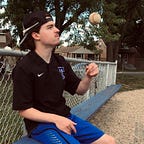Staying In The Game: How The Baseball World Has Battled COVID-19
In a time of fear and tragedy, the baseball community has come together in order to adapt to a new normal and overcome the Coronavirus.
The COVID-19 Pandemic has taken the world by storm. Non-essential businesses have shut down, social opportunities have been restricted, and many people have died. With sports leagues on pause, the MLB season has stopped before it could even start, and cancellations of high school and college baseball seasons have players, coaches, and fans searching for ways to stay in the game.
On March 12th, Major League Baseball announced the cancellation of remaining spring training games and a two-week delay to the start of the season. The NCAA then canceled the remainder of the spring sports season, including the College World Series. At the high school level, states were forced to cancel spring sports as well.
Major League Baseball’s plans for the season have changed frequently due to COVID-19. Originally pushed back two weeks, opening day has since been pushed back even further. Additionally, plans to reduce the number of games, realign divisions, and play games in Arizona and Florida were discussed. As of May 9th, Major League Baseball is hoping to begin its season in early July, with an 82-game schedule, expanded postseason, and games at home ballparks with no fans.
While the MLB hopes to start at some point, the college and high school levels are stuck in the mud. Following the cancellation of their seasons, players are now faced with tough decisions in regards to their futures. This includes high school players who have to find new ways to be seen by colleges.
“Game experience during high school season is valuable and many younger players need every opportunity to be in high pressure, meaningful situations to progress their development,” said Bobby Stevens, the owner of Windy City Baseball Club, who has helped players get recruited and ready to play at the college level. “Many players are searching for solutions to be seen by their desired colleges.”
Colleges have also had to go about recruiting differently. Cori Herbert, the pitching coach and recruiting coordinator at Judson University, discussed how social media has become the main way to scout players:
“It’s become a social media game, through watching tape of guys hitting or pitching, but it’s difficult because video doesn’t give the full picture. The toughest part is getting guys to commit because we don’t know if we’ll be back playing in the fall,” Herbert said.
A key part of the situation is the NCAA’s granting of an extra year of eligibility for all players. This means that 2020 seniors will now be able to return next year. This has a major impact on college rosters, and high school and college players may look to play elsewhere due to backed up depth charts.
“I was hoping to have a full season and be able to find somewhere to transfer, but without that, I have to look into alternative plans as far as both baseball and school go. I just have to play the cards I’m dealt, and that’s all I can do,” said Steven Salvino, a sophomore shortstop at the College of DuPage.
Minor League baseball has also taken a hit. While minor league players are being paid weekly through May 31st, many of them are unsure what their future holds, as they were not assigned to teams when training camps were shut down.
While waiting for decisions regarding their seasons, professional players have been staying in shape, and some players have gotten creative with it. New York Mets pitcher Marcus Stroman even pitched on a dock in Florida:
Whether it’s hitting, fielding, or throwing bullpens, players have found ways to stay ready for the season at their homes. This has also allowed them to spend more time with their families, something that can be hard to manage during baseball season.
Video games have become popular for players and fans alike. Through the streaming platform Twitch, MLB players have played “MLB: The Show” in front of baseball fans everywhere. There was even an “MLB The Show Players League”, with players from all 30 MLB teams competing against each other on Livestream.
Although the pandemic’s impact on baseball has been huge, the impact it has had on everyone else has been bigger. In response, Major League Baseball has given back to the community, particularly through donations to nonprofit organizations and team employees, and participation in a national COVID-19 study.
The COVID-19 Pandemic has changed life for everyone, yet people have found ways to move forward. High school and college players have accepted their new realities and continued to train. As uncertainty still looms for Major League Baseball, the league and its players have done a lot to help their communities, stay ready, and stay positive. Baseball may look a little different this year, but the baseball community’s passion for the game has held strong.
